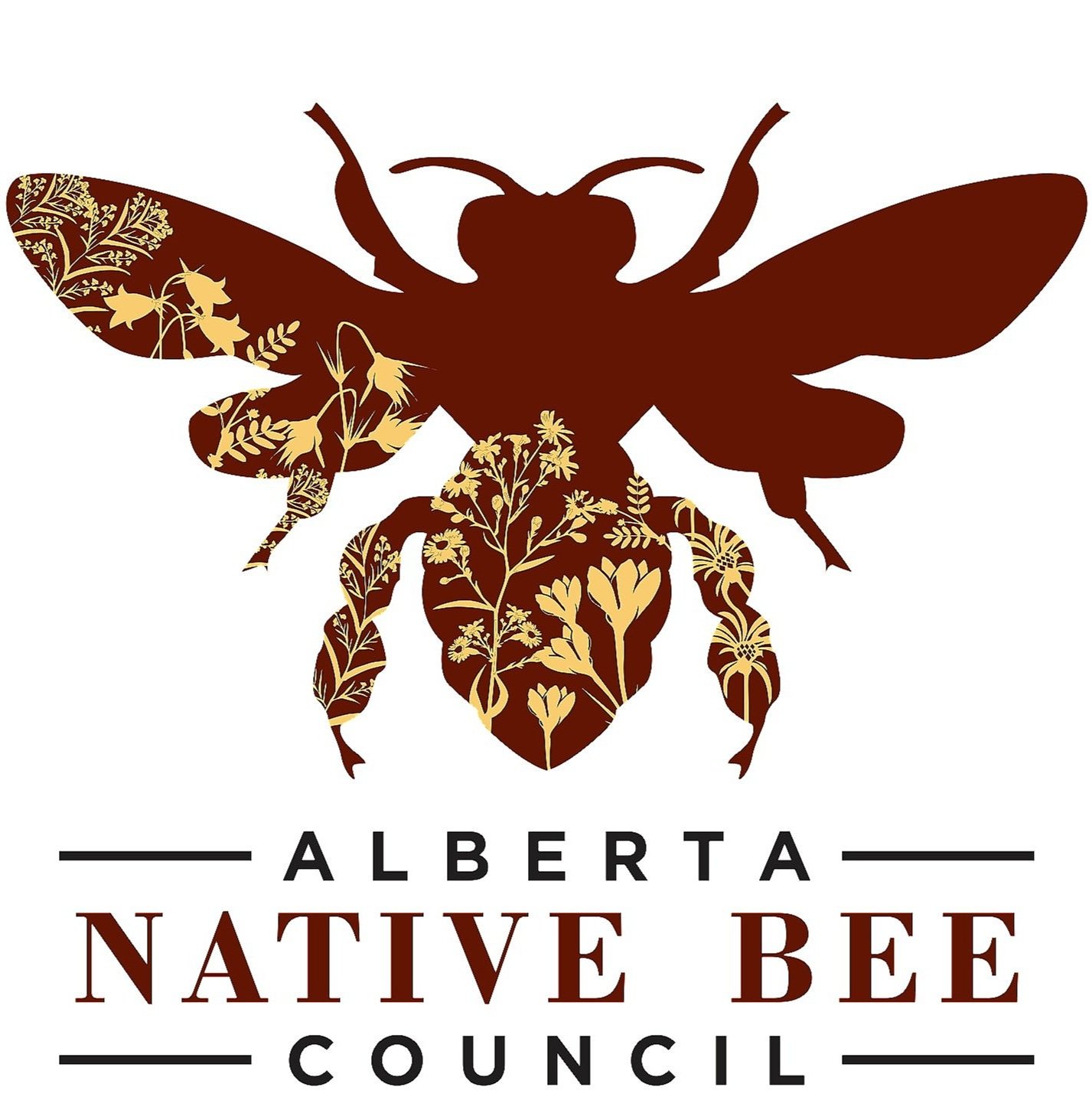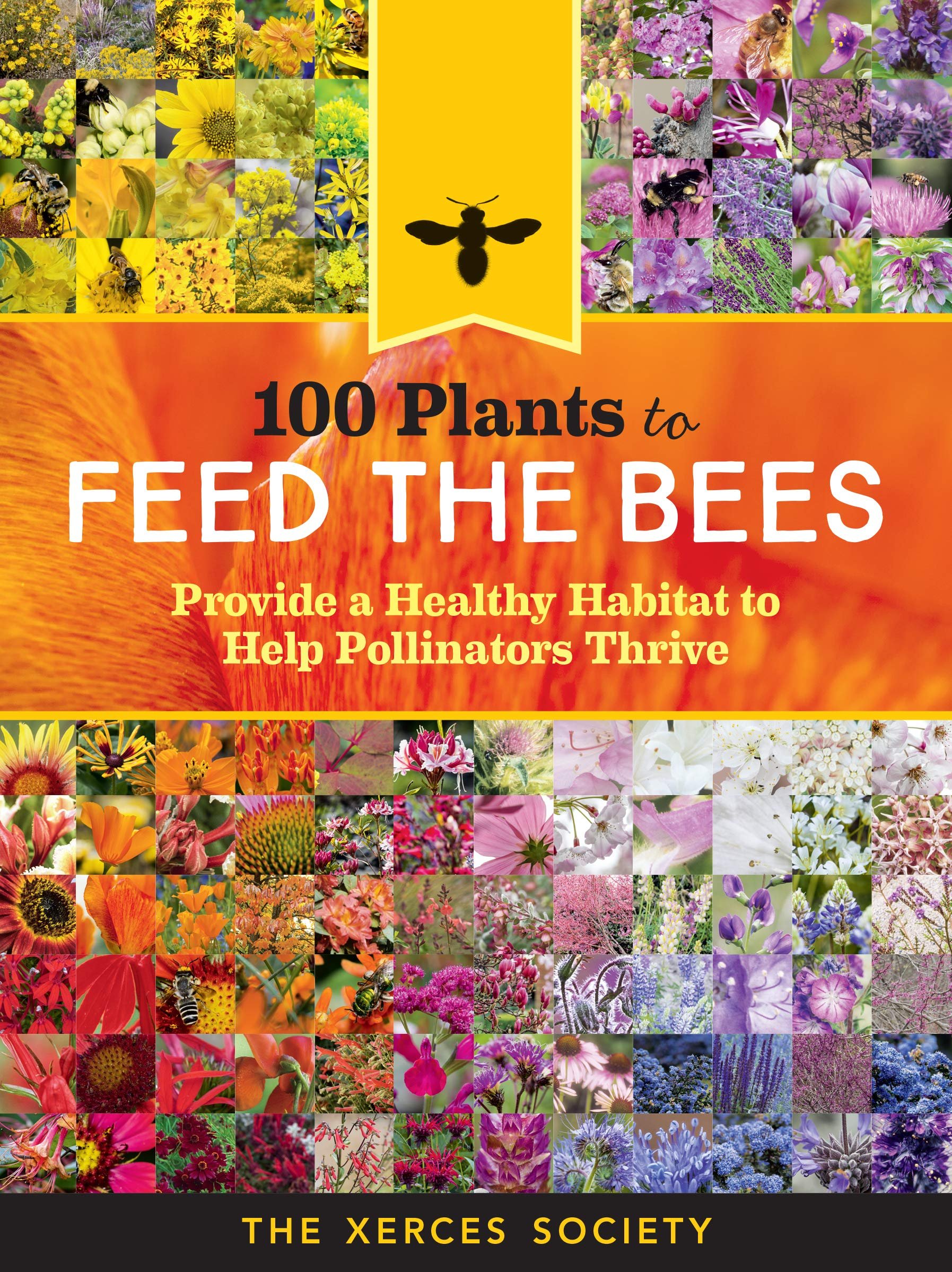Top 10 Books to Learn About Bees, and How to Help Them
Click on the book covers for a link to the books!
1. The Bees in Your Backyard by Joseph S. Wilson and Olivia Messinger
The Bees in Your Backyard provides an engaging introduction to the roughly 4,000 different bee species found in the United States and Canada, dispelling common myths about bees while offering essential tips for telling them apart.
The book features more than 900 stunning color photos of the bees living all around us―in our gardens and parks, along nature trails, and in the wild spaces between. It describes their natural history, including where they live, how they gather food, their role as pollinators, and even how to attract them to your own backyard. Ideal for amateur naturalists and experts alike, it gives detailed accounts of every bee family and genus in North America, describing key identification features, distributions, diets, nesting habits, and more.
Provides the most comprehensive and accessible guide to all bees in the United States and Canada
Features more than 900 full-color photos
Offers helpful identification tips and pointers for studying bees
Includes a full chapter on how to attract bees to your backyard
2. Bumblebees of North America, An Identification Guide by Paul H. Williams, Robbin Thorp, Leif Richardson and Sheila Colla
More than ever before, there is widespread interest in studying bumble bees and the critical role they play in our ecosystems. Bumble Bees of North America is the first comprehensive guide to North American bumble bees to be published in more than a century. Richly illustrated with color photographs, diagrams, range maps, and graphs of seasonal activity patterns, this guide allows amateur and professional naturalists to identify all 46 bumble bee species found north of Mexico and to understand their ecology and changing geographic distributions.
The book draws on the latest molecular research, shows the enormous color variation within species, and guides readers through the many confusing convergences between species. It draws on a large repository of data from museum collections and presents state-of-the-art results on evolutionary relationships, distributions, and ecological roles. Illustrated keys allow identification of color morphs and social castes.
The best guide yet to the 46 recognized bumble bee species in North America north of Mexico
Up-to-date taxonomy includes previously unpublished results
Detailed distribution maps
Extensive keys identify the many color patterns of species
3. The Solitary Bees: Biology, Evolution, Conservation by Bryan N. Danforth, Robert L. Minckley and John L. Neff
While social bees like honey bees and bumble bees are familiar to most people, they comprise less than 10 percent of all bee species in the world. The vast majority of bees lead solitary lives, surviving without the help of a hive and using their own resources to fend off danger and protect their offspring. This book draws on new research to provide a comprehensive and authoritative overview of solitary bee biology, offering an unparalleled look at these remarkable insects.
The Solitary Bees uses a modern phylogenetic framework to shed new light on the life histories and evolution of solitary bees. It explains the foraging behavior of solitary bees, their development, and competitive mating tactics. The book describes how they construct complex nests using an amazing variety of substrates and materials, and how solitary bees have co-opted beneficial mites, nematodes, and fungi to provide safe environments for their brood. It looks at how they have evolved intimate partnerships with flowering plants and examines their associations with predators, parasites, microbes, and other bees. This up-to-date synthesis of solitary bee biology is an essential resource for students and researchers, one that paves the way for future scholarship on the subject.
Beautifully illustrated, The Solitary Bees documents the critical role solitary bees play as crop pollinators, and raises awareness of the dire threats they face.
4. Pollinators and Pollination by Jeff Ollerton
Written by one of the world’s leading pollination ecologists, this book provides an introduction to what pollinators are, how their interactions with flowers have evolved, and the fundamental ecology of these relationships. It explores the pollination of wild and agricultural plants in a variety of habitats and contexts, including urban, rural and agricultural environments. The author also provides practical advice on how individuals and organisations can study, and support, pollinators.
As well as covering the natural history of pollinators and flowers, the author discusses their cultural importance, and the ways in which pollinator conservation has been portrayed from a political perspective. The book draws on field work experiences in South America, Africa, Australia, the Canary Islands and the UK.
For over 30 years the author has spent his career researching how plants and pollinators evolve relationships, how these interactions function ecologically, their importance for society, and how we can conserve them in a rapidly changing world. This book offers a unique and personal insight into the science of pollinators and pollination, aimed at anyone who is interested in understanding these fascinating and crucial ecological interactions.
5. Attracting Native Pollinators: A Guide to Protecting North America’s Bees and Butterflies by the Xerces Society
With the recent decline of the European honey bee, it is more important than ever to encourage the activity of other native pollinators to keep your flowers beautiful and your grains and produce plentiful. In Attracting Native Pollinators, you’ll find ideas for building nesting structures and creating a welcoming habitat for an array of diverse pollinators that includes not only bees, but butterflies, moths, and more. Take action and protect North America’s food supply for the future, while at the same time enjoying a happily bustling landscape.
6. 100 Plants to Feed the Bees: Provide a Healthy Habitat to Help Pollinators Thrive by The Xerces Society
The international bee crisis is threatening our global food supply, but this user-friendly field guide shows what you can do to help protect our pollinators. The Xerces Society for Invertebrate Conservation offers browsable profiles of 100 common flowers, herbs, shrubs, and trees that support bees, butterflies, moths, and hummingbirds. The recommendations are simple: pick the right plants for pollinators, protect them from pesticides, and provide abundant blooms throughout the growing season by mixing perennials with herbs and annuals! 100 Plants to Feed the Bees will empower homeowners, landscapers, apartment dwellers — anyone with a scrap of yard or a window box — to protect our pollinators.
7. For kids! Am I Even a Bee? By Dr. Felicity Mutch and Alexa Lindauer
Am I Even a Bee? is the story of Osmia, a solitary bee, decidedly green and unquestionably un-fuzzy. Osmia has always believed she is a bee (her mom told her so), but recent run-ins with people, and even other insects, leave her wondering, “Am I even a bee?!” Confused, Osmia faces an identity crisis, and she turns to her meadow for comfort. It is here that she meets her new friend and guide Xyla, a carpenter bee who, like Osmia, does not fit the black-and-yellow social mold. Through some adventures and chance encounters, Osmia and Xyla meet a slew of non-honey bees, each special and important to the meadow in their own unique way. Osmia discovers that while fame is great, diversity and acceptance are essential to a happy ecosystem. As it turns out, there is no one way to be a bee!
8. Bees of the World: A Guide to Every Family by Laurence Packer
When many people think of bees, they are likely to picture the western domesticated honey bee, insects that live in large, socially complex societies inside a hive with a single queen and thousands of workers. But this familiar bee is just one of more than 20,000 species of bees—and almost none of the others is anything like it. In Bees of the World, Laurence Packer, one of the world’s foremost experts on wild bees, celebrates the amazing diversity of bees—from size and appearance to nests and social organization.
Providing clear, accurate accounts of the seven bee families, Bees of the World presents all the key information on generic characteristics, habits, and habitat, illustrated with incredible and often rare photographs that show bees in their natural habitats—foraging, nesting, raising their young, and more. The book reveals the secrets of these extraordinary insects as well as their importance in the global ecosystem and the ways humans can help protect them.
Provides a richly illustrated exploration of bees from around the world
Examines more than 100 genera of bees, giving a taste of the remarkable breadth of bee appearance and biology
Explores bee anatomy, behavior, classification, evolution, life cycle, and habitats
9. Bee Basics: An Introduction to Our Native Bees by The United States Department of Agriculture
Native bees are a hidden treasure. From alpine meadows in the national forests of the Rocky Mountains to the Sonoran Desert in the Coronado National Forest in Arizona and from the boreal forests of the Tongass National Forest in Alaska to the Ocala National Forest in Florida, bees can be found anywhere in North America, where flowers bloom. From forests to farms, from cities to wildlands, there are 4,000 native bee species in the United States, from the tiny Perdita minima to large carpenter bees. Most people do not realize that there were no honey bees in America before European settlers brought hives from Europe. These resourceful animals promptly managed to escape from domestication. As they had done for millennia in Europe and Asia, honey bees formed swarms and set up nests in hollow trees. Native pollinators, especially bees other than honey bees, have been pollinating the continent's flowering plants since long before the arrival of honey bees.
10. Victory Gardens for Bees: A DIY Guide to Saving the Bees by Lori Weidenhammer
Who knew modern civilization may be brought down, not by plagues or war, but by bees? Or, more correctly, by no bees? This book investigates the growing problem of bee mortality and offers practical measures we can all take to help. In ecological terms, bees play a critical role in the survival of many plant communities and the continuation of life on this planet. No pollination, no seeds. No seeds, no future.
Now that bees are facing unprecedented levels of die-off caused by a toxic mixture of environmental stresses, planning a bee-friendly space can provide a beautiful and bountiful selection of edible crops, native plants and fragrant ornamentals, as well as herbs that have medicinal properties for both pollinators and people. With the help of ten inspiring garden plans and planting guides, Weidenhammer shows how bee-friendly plants can be used in creative combinations for plots and pots of all sizes, and are easily grown by novices and seasoned gardeners alike.
Readers will learn how to pack optimum benefits into a limited space for the survival of hive and home, and backyard beekeepers will learn great planting strategies for making sure their honeybees are healthy and have ample food to overwinter.
Victory Gardens for Bees is also buzzing with DIY projects that will provide nesting sites and essential supplies for precious pollinators. With plenty of photographs to help readers identify bees of all stripes, beekeeping tips and other interesting bee-phemera, this book is a must-have for anyone who wants to do their part to save bees.










